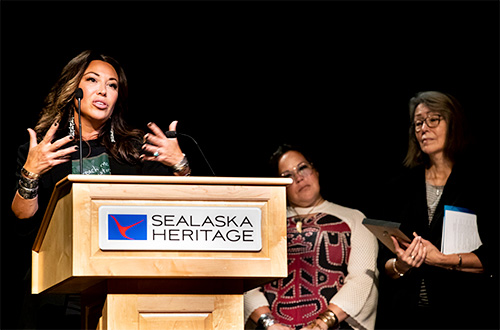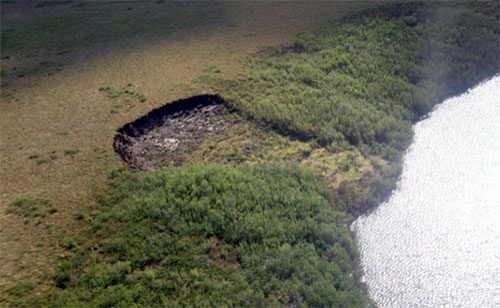








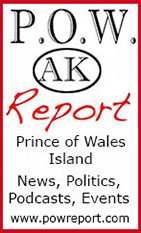

 Contact Contact 
 Webmail
Letters Webmail
Letters
 News Tips News Tips
 Copyright Info Copyright Info
 Archives Archives
Quick News
Search
 Alaska Alaska
 Ketchikan Ketchikan
 SE Alaska SE Alaska
Columns
- Articles
 Dave Kiffer Dave Kiffer
 Money Matters Money Matters
Historical
Ketchikan
 June Allen June Allen
 Dave
Kiffer Dave
Kiffer
 Louise
B. Harrington Louise
B. Harrington
Sports
 Ketchikan Links Ketchikan Links
Public Records
 FAA Accident Reports FAA Accident Reports
 NTSB
Accident Reports NTSB
Accident Reports
 Court Calendar Court Calendar
 Recent Filings & Case Dispositions Recent Filings & Case Dispositions
 Court Records Search Court Records Search
 Sex Offender Reg. Sex Offender Reg.
 Public Notices Public Notices
 Alaska Recall Alerts Alaska Recall Alerts
 Recalls.gov Recalls.gov
 AST Daily Dispatch AST Daily Dispatch
 KTN
Police Reports KTN
Police Reports
 Juneau Police Reports Juneau Police Reports
Weather,
Webcams
 Today's
Forecast Today's
Forecast
 KTN
Weather Data KTN
Weather Data
 AK
Weather Map AK
Weather Map
 AK Weathercams AK Weathercams
 AK Earthquakes AK Earthquakes

|

Thursday
August 18, 2022
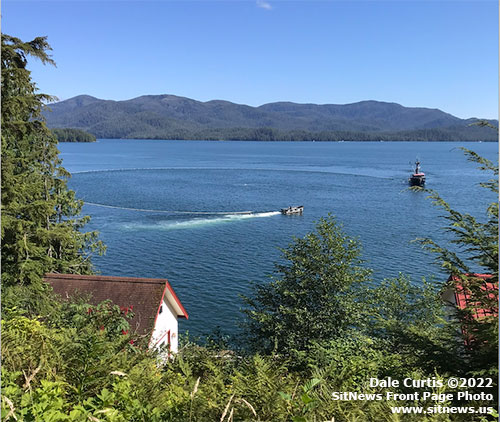
Mountain Point Area Fishing
SitNews Front Page Photo
By DALE CURTIS ©2022
To have your photo(s) featured on the front page of SitNews,
email your photos to editor@sitnews.us |
 COVID-19 DATA SUMMARY – August 17, 2022 COVID-19 DATA SUMMARY – August 17, 2022
Reporting data for August 10-16, 2022
STATEWIDE OVERVIEW: – 2,103 new cases - 0 newly reported deaths - 86 hospitalizations
SE ALASKA POSITIVE CASES:
Ketchikan
10; Juneau 68; Metlakatla 9; Petersburg 2; POW-Hyder 3; Sitka 18; Wrangell 4; Haines 8
 COVID-19 DATA SUMMARY – August 10, 2022 COVID-19 DATA SUMMARY – August 10, 2022
Reporting data for August 3 - 9, 2022
STATEWIDE OVERVIEW – 2,553 new cases - 21 newly reported deaths - 65 hospitalizations
SE ALASKA POSITIVE CASES:
Ketchikan 21; Juneau 52;
Haines 18; Metlakatla 1; Sitka 39; Skagway 3; Wrangell 11; Petersburg 4; POW_Hyder 5
 COVID-19 DATA SUMMARY – August 3, 2022 COVID-19 DATA SUMMARY – August 3, 2022
Reporting data for July 27 - August 02, 2022
A total of 1,275 COVID-19 deaths have been documented among Alaska residents since the beginning of the pandemic.
OVERVIEW – 3,284 new cases - 0 newly reported deaths - 74 hospitalizations
SE Alaska Positive Cases:
Ketchikan 22, KGB 2, Juneau 102, Craig 4, Metlakatla 6, Haines 12, Petersburg 5, Sitka 39, Wrangell 11, POW-Hyder 8.
 COVID-19 DATA SUMMARY – July 27, 2022 COVID-19 DATA SUMMARY – July 27, 2022
Reporting data for July 20-26, 2022
STATEWIDE OVERVIEW: 2,946 new cases; 0 newly reported deaths ; 83 hospitalizations
SE ALASKA POSITIVE CASES: Ketchikan 25, Juneau 103, Metlakatla 5,
Craig 4, Haines 8, Petersburg 5, Sitka 44, POW-Hyder 5, Wrangell 7.
 Alert Levels Alert Levels
 Case Counts Dashboard Case Counts Dashboard
 Information Hub Information Hub
 Alaska: Statewide COVID-19 Alert Levels, Updates, Active Cases, Hospitalizations, etc. Alaska: Statewide COVID-19 Alert Levels, Updates, Active Cases, Hospitalizations, etc.
Ketchikan: Public Meetings
Ketchikan: Upcoming Events
Ketchikan: Announcements
Ketchikan: Classifieds
Historical
Ketchikan
 June Allen June Allen
 Dave
Kiffer Dave
Kiffer
 Louise
B. Harrington Louise
B. Harrington
Ketchikan Weather
 Ketchikan's
Forecast Ketchikan's
Forecast
 Ketchikan July Weather Ketchikan July Weather
 Ketchikan 2022 Daily & Monthly Data (Choose the Location of Interest) Ketchikan 2022 Daily & Monthly Data (Choose the Location of Interest)
 Nat Weather Service KTN Nat Weather Service KTN
 Ketchikan Tides & Currents Ketchikan Tides & Currents
 Tideschart Tideschart
 Sunrise - Sunset Ketchikan Sunrise - Sunset Ketchikan
Search the News
 Ketchikan Ketchikan
 Alaska Alaska
 SitNews Search SitNews Search
|
Ketchikan - Statewide: Over $57 Million in Additional Infrastructure Funding for Alaskan Communities Announced -
Recently US. Senator Lisa Murkowski (R-AK) announced that the Federal Transit Administration (FTA) and the U.S Department of Transportation (DOT) are awarding over $57.1 million in grants for infrastructure upgrades and development across Alaska. The grants are for road construction, dock and service center construction, and buses and bus facilities.
The entities benefiting from these new awards, which are being made under the bipartisan Infrastructure Investment and Jobs Act of 2021, include the Gulkana Village Council, City and Borough of Juneau, Metlakatla Indian Community, Ketchikan Gateway Borough, Fairbanks North Star Borough, City and Borough of Sitka, Bristol Bay Native Association, and Qawalangin Tribe of Unalaska.
“The good news from our bipartisan infrastructure law continues. This latest round of grants will help Alaskans with road construction, facility construction and upgrades, and cleaner buses for public transportation,” Senator Murkowski said. “The communities that receive these grants will benefit from better transportation, less pollution, and lower costs for their residents. I thank both FTA and DOT for considering Alaskans’ applications, and look forward to continued assistance for additional communities in the years ahead.”
“As Alaska’s communities change and grow, the need for affordable public transportation will also continue to increase,” said Alaska Department of Transportation & Public Facilities Commissioner Ryan Anderson. “Transit has become a greater necessity in all of our communities, large and small. We are really pleased to see these transit grants spread throughout the state’s transportation network.”
“The Ketchikan Gateway Borough is extremely excited that we were selected to receive a FTA grant to electrify our buses. This, combined with our renewable hydropower, will allow our transit department to provide quiet, exhaust free public transportation for years to come. A win for the environment and our community. Our heartfelt appreciation to Senator Murkowski for her efforts in securing this grant for the community,” said Ketchikan Borough Mayor Rodney Dial.
“Metlakatla Indian Community would like to thank the Federal Transit Authority for awarding our project the Metlakatla Municipal Building - Annette Islands Ferry Terminal Battery Electric Bus Service in the amount of $402,257. This grant is part of our overall strategy to reduce transportation costs and reduce air pollution in Southeast Alaska. The goal is to eliminate unnecessary automobile trips and reduce auto emissions significantly. It will provide transport services to the community and supplement our elder transport services and those without adequate transportation. In addition, it will provide energy storage for our micro-grid when it is not in use reducing the cost of transportation and energy for the Metlakatla Indian Community. We again thank Senator Murkowski and the federal government for this funding,” said Metlakatla Indian Community Mayor Albert Smith. - More...
Thursday - August 18, 2022
Alaska: Companies plan $2.6B investment in major Alaska oil project Posted & Edited By MARY KAUFFMAN -
Alaska Governor Mike Dunleavy is praising this week's announcement by Santos and Repsol to move forward with Phase 1 of the Pikka project on Alaska’s North Slope. Located in the Nanushuk oil formation on state leases, the Pikka unit contains an estimated 768 million barrels of recoverable oil. Oil Search will invest $2.6 billion to bring the field into production by 2026 which will create 2,600 jobs during construction, and 500 jobs once oil production begins.
“This announcement will continue the renaissance on Alaska’s North Slope,” said Governor Dunleavy. “Alaska has a rich and successful oil and natural gas history, and we welcome the family wage jobs the Pikka project will bring, and the 80,000 barrels of new oil it will send down the Trans-Alaska Pipeline System each day. Americans are paying sky high energy prices right now – but it doesn’t have to be that way. Alaska has the resources and environmental safeguards in place to meet America’s energy needs today and for decades to come.”
U.S. Senators Lisa Murkowski and Dan Sullivan (both R-Alaska) issued the following statements welcoming Santos’ announcement that it has approved a $2.6 billion investment for Phase 1 of its Pikka project on Alaska’s North Slope.
“This is great news for Alaska that will strengthen our economy for a long time to come,” Murkowski said. “The Pikka project will help refill the Trans-Alaska Pipeline System while creating good jobs for Alaskans and bolstering our nation’s energy security. I appreciate the approach that Santos and their partner, Repsol, have taken to advance this project, their strong collaboration with local entities and communities, and their commitment to producing this resource with net-zero emissions from the project itself.”
“It’s exciting to see this project, which has been in the works since I was serving as Alaska’s Department of Natural Resources Commissioner, finally come to fruition,” Senator Sullivan said.
“Today’s [August 16, 2022] announcement is great news for energy security, national security, and for economic and community development, including thousands of jobs for Alaskans, in our state where we have the highest environmental standards in the world,” said Sullivan.
“This announcement opens a major new chapter for the North Slope, and confirms a bright future for natural resource development in Alaska,” said Department of Revenue Commissioner Lucinda Mahoney. - More...
Thursday - August 18, 2022
Nationwide: ACLU Files Amicus Brief Urging Supreme Court to Uphold the Indian Child Welfare Act -
The American Civil Liberties Union, along with 12 ACLU state affiliates, filed an amicus brief with the U.S. Supreme Court today urging the court to uphold the constitutionality of the Indian Child Welfare Act. The Indian Child Welfare Act (ICWA) — which establishes basic requirements to protect Native American children from continued forced removal from their families, tribes, and tribal culture — is slated to be reviewed by the Supreme Court this fall via Brackeen v. Haaland.
The Indian Child Welfare Act was passed by Congress in 1978 to address the nationwide epidemic of American Indian children being forcibly removed from their homes by child welfare agencies and placed into non-Native homes at disproportionate rates. Throughout history, federal and state governments have sought to undermine and threaten the existence of tribes via the forced separation and assimilation of Native children. ICWA requires state courts to make active efforts to keep Native families together. The law aims to prioritize the placement of Native children within their extended families or tribal communities, where their cultural identities will be understood and celebrated. If the Supreme Court overturns ICWA, states would once again be allowed to indiscriminately remove Native children from their families and culture while simultaneously depriving tribes of future generations — putting the very existence of tribes in jeopardy.
“Throughout history, the United States government has enacted countless policies to steal Indigenous children from their homes and to erase their identities,” said Theodora Simon (Navajo), Indigenous Justice Advocate with the ACLU of Northern California.
Simon said, “The explicit goal of these policies was, and continues to be, the complete erasure of Indigenous people. If the Indian Child Welfare Act is overturned, tribes will again be stripped of their right to keep their families together. This is a tragedy as we know that having connection to our cultures, languages, and identities is in the best interest of Native children.”
Tribes have an inherent right to govern themselves and make decisions on issues that affect their people - including Native children. The ACLU’s brief argues the Indian Child Welfare Act is constitutional and urges the Supreme Court to uphold the centuries-long legal precedent upholding tribal sovereignty - including tribes’ right and ability to preserve their unique cultural identities, raise their own children and govern themselves.
“Separating children from their families and communities remains one of the most tragic and traumatizing vestiges of colonialism in Alaska,” said ACLU of Alaska Executive Director Mara Kimmel. “We join this litigation to honor our constitutional promise of tribal self-determination and to ensure Alaska’s children and cultures thrive into the future.” - More...
Thursday - August 18, 2022
|
| Ketchikan: Ketchikan Educator Wins SHI'S "Teacher of Distinction" Award; Honor given during SHI’s 2022 Culturally Responsive Education Conference -
A Ketchikan teacher was honored with the 2022 “Teacher of Distinction” award by Sealaska Heritage Institute (SHI) on August 13, 2022 during SHI’s Culturally Responsive Education Conference.
Teresa Dl’a Gwa T’awaa Varnell, a teacher and cultural coordinator for the Ketchikan Gateway Borough School District, is also the lead facilitator and teacher of SHI’s Through the Cultural Lens program, which seeks to integrate Native cultures into schools through extensive orientations and an annual conference with educators.
Varnell was a solid candidate for the award because of her ability to lead challenging conversations with Native and non-Native educators in a safe and respectful manner, said SHI President Rosita Worl.
“Teresa’s ability to guide conversations among educators on Native cultural values, societal structures, intergenerational trauma and the history of boarding schools has helped us open an important dialog,” Worl said. “These conversations can be challenging and uncomfortable, but she has helped create a community where people feel safe delving into these topics.”
Her work also enables teachers to take the next step in professional development towards cultural relevancy and place-based practices.
“When one drops a pebble in a still pond the ripples cross to every part of the pond. Dl’a Gwa T’awaa has dropped the proverbial pebble in Ketchikan and in other Southeast Alaskan communities,” wrote one person who nominated her for the award, “and the result is that the teachers she works with are now having an impact on their colleagues as they go back to their schools and classrooms…her impact is felt by countless students.”
Varnell accepted the award on the main stage on August 13, 2022.
“I am not the one accepting this honor; this honor belongs to my ancestors…and to the future generations who will do this work,” Varnell said. - More...
Thursday - August 18, 2022
|
|
Ketchikan Historical: Doctor Mustard or Major Mustard? Pioneering doctor was a big name in 1920s Ketchikan By DAVE KIFFER - Ketchikan has had many interesting medical professionals in the past century, but one of the most accomplished was Dr. John Mustard. Mustard traveled the world, studying in London and Vienna. He was the mayor of Nome during the Gold Rush. He was also a gentleman fox farmer. But he spent much of his medical career serving the residents of Ketchikan.
This information on Mustard is from the files at the Tongass Historical Museum.
John Howard Mustard was born in Brucefield, Ontario, Canada on July 19, 1869. He was one of 15 children. His parents had emigrated from Scotland.
When he was six, the family moved to Abilene, Kansas. He would attend the University of Kansas and graduate in 1894. He moved to Chicago and graduated with a medical degree from Rush Medical College in 1901. He did his intern studies in Chicago and then went abroad, serving as an assistant surgeon in London. He also traveled throughout England as an emergency surgeon. At one point, he studied at the College of Medicine in Vienna, Austria.
Eventually the peripatetic Mustard ended up in Seattle. He met up with a former classmate from Rush College who introduced him to the Captain of the steamship Ohio. The steamship needed a ship's doctor and Mustard signed on for a trip to Nome. Arriving in the gold rush city in 1904, Mustard decided to stay and opened up a medical practice.
He would spend more than a decade in Nome and was even elected Mayor at one point. In 1913, Alaska Territorial Governor John Strong appointed him to the territorial board of medical examiners.
When the United States entered World War I in 1917, Mustard was commissioned a Captain in the US Army Medical Corps. He was stationed at the Presidio in San Francisco and Camp Fremont in Palo Alto, where he was the commanding officer of the field hospital. He was also an inspector at the base hospital at Camp Lewis in Washington before he was mustered out in August of 1919. He remained an Army reserve medical officer.
Returning to Alaska, Mustard decided to continue his medical career in Ketchikan. He purchased the practice, and the equipment, of Dr. Thatcher Miller, who was leaving the First City.
Besides his medical practice, Mustard took an interest in an industry that was then sweeping the region, Fox Farming. (See "When Fur Farming Was Alaska's Third Largest Industry" SITNEWS, 9-12-21).
In 1922, he joined a group of Ketchikan businessmen to form a corporation that would create one of the largest fur farms in the region, on Hotspur Island.
The group raised $75,000 ($1.3 million in 2022 dollars) and leased Hotspur Island from the federal government.
Mustard also took an active role in establishing the Southeastern Alaska Blue Fox Farmer's Association and the group met in Ketchikan in 1923. The association lobbied the territorial legislature to codify protections for the farms such as fox branding and breed registration. The territorial government devised 178 specially designed branding irons and distributed them to area farms.
Hotspur is located between Annette and Duke islands but, at the time of the lease, it was not unoccupied. A Tlingit man named George James had a homesite on the 1,800-acre island. The new company, Ketchikan Fur Farms, evicted James. He filed a lawsuit in 1929, but - not surprisingly - lost in court to the much more powerful business.
Mustard, and the other members of Ketchikan Fur Farms, eventually built the farm on Hotspur and "seeded" the island with 50 breeding pairs of blue foxes. But history has lost whether it was a successful farm or not. Most likely it closed down in the 1930s when The Depression pretty much wiped out the regional fox farming industry by cutting off the demand. - More...
Thursday - August 18, 2022
|
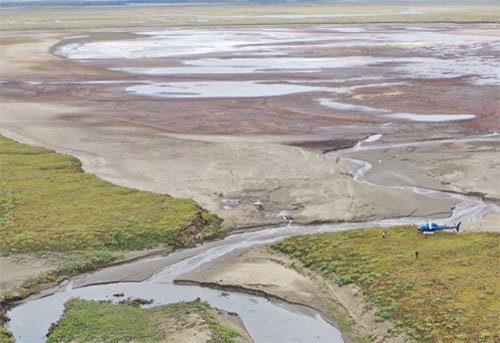
If a lake drains in northern Alaska…
By NED ROZELL
Harry Potter Lake, pictured in this drone photo, lies mostly empty after its water drained into a nearby creek on Alaska’s North Slope in early July 2022.
Photo by Allen Bondurant |
| Alaska: If a lake drains in northern Alaska… By NED ROZELL -
“Lakes seem, on the scale of years or of human life spans, permanent features of landscapes, but they are geologically transitory, usually born of catastrophes, to mature and die quietly.” — George Evelyn Hutchinson, “A Treatise on Limnology,” 1957.
Harry Potter Lake did not die quietly. Water in the basin on Alaska’s North Slope cut through a 30-foot strip of tundra in early July 2022. The lake then roared into a creek. The creek swelled like a python for a day, robbing Harry Potter Lake of the majority of its water.
Scientists know this because they were watching the lake with game cameras and satellite images.
Chris Arp, of the University of Alaska Fairbanks Water and Environmental Research Center, named Harry Potter Lake because his daughter was enjoying the book series when he first encountered the lake. It also somewhat resembles a wizard’s hat when seen from above.
Arp and other scientists were monitoring the lake because it’s in an area oil companies are considering for development. The lake was large enough that while standing on one side of the water-filled oval in that flat, buggy landscape, you could not see the far shore.
During fieldwork four years ago, Arp noticed that the lake basin was perched 10 feet above the creek level. If gravity had its way, lake water would some day make it into the creek.
Arp noticed a trickle of water between the lake and the river in summer 2021. When he returned this summer, the water was doing its thing.
“By late June that water had begun to cut a major niche, which increased the flow and caused it to erode even faster,” Arp said from Deadhorse after returning from the lake basin in mid-August. “We realized then it was going to go soon.” - More...
Thursday - August 18, 2022
|
|
Alaska: Alaska Comprehensive Economic Development Strategy Public Comment Period Closes August 26th -
The Alaska Department of Commerce, Community, and Economic Development (DCCED) announced the start of a 30-day public comment period for the draft 2022-2027 Statewide Comprehensive Economic Development Strategy (CEDS) on July 17, 2022.
The Department of Commerce, Community, and Economic Development partnered with the University of Alaska Center for Economic Development (UACED) to help develop this document that will guide statewide economic development efforts through 2027.
This new 5-year plan provides a roadmap for growth – to expand existing economic sectors, support high- potential new growth sectors, cultivate a strong business and entrepreneurial ecosystem, strengthen critical infrastructure, foster workforce development and educational opportunities, and improve economic resiliency. The report was developed under guidance from the Economic Development Administration. It replaces the existing 2017-2022 Statewide CEDS, which expires in September.
“The first step towards success starts with a solid plan,” said Governor Mike Dunleavy. “Alaska’s resources and people have so much to offer the rest of the country and the world. I urge all Alaskans to share their knowledge, experience, and ideas on how to capitalize on opportunities to nurture and grow our economy from now through the end of the decade.”
“I am so impressed with the amount of collaboration and idea-sharing that has occurred throughout this re-write of the state’s economic development strategy thus far,” said DCCED Commissioner, Julie Sande. “This next step in solidifying the Statewide CEDS is an exciting one. The 30-day comment period is a great opportunity for Alaskans to get involved and provide their input on something that will directly impact the future of our state.” - More...
Thursday - August 18, 2022
Alaska: Last of four teenagers charged with the November 2016 murder of 16-year-old sentenced -
Palmer resident Bradley Renfro was sentenced today to 105 years and to serve 75 years for the kidnapping and murder of 16-year-old David Grunwald.
Renfro is the last defendant to be sentenced of the four teenagers who were charged with the November 2016 murder. In May 2018, Renfro was convicted by a Palmer jury of eight charges, including murder, kidnapping, and arson. Renfro was 16 at the time of the crimes.
Court proceedings indicate that Renfro arrived at the property when three friends used a pistol to beat Grunwald. On Nov. 13, 2016, Grunwald was pistol whipped in a camper behind co-defendant Erick Almandinger’s home. Grunwald was then driven for nearly half an hour in his own vehicle, walked into the woods near the Knik River and executed. Renfro offered suggestions on where the murder should take place. Following the murder, Renfro planned to destroy evidence and bought gasoline to burn Grunwald’s vehicle. The vehicle was discovered burned, miles away near the Talkeetna Mountains. Grunwald’s body was found nineteen days later after co-defendant Dominic Johnson led law enforcement to the area.
During sentencing, retired Palmer Superior Court Judge Gregory Heath remarked on Renfro’s and the three co-defendants’ crimes: “I can’t see why they did this, other than they have no value for life.” Judge Heath found that Grunwald was driven for nearly half an hour and emotionally tortured. Judge Heath said the crimes warranted a severe sentence reflecting general deterrence, reaffirmation of societal norms, and community condemnation. In his final statement prior to sentencing, Judge Heath remarked “to walk someone in the woods and execute them, it takes a darkness in these boys”.
The judge sentenced Renfro to: - More...
Thursday - August 18, 2022
Alaska: Alaska Legal Services Corporation Awarded $350,000 Grant to Improve Pro Bono Services -
The Legal Services Corporation (LSC) announced yesterday that it is awarding a $350,206 Pro Bono Innovation Fund grant to Alaska Legal Services Corporation (ALSC).
Alaska Legal Services Corporation is one of 15 legal aid organizations receiving a grant. In total, LSC is awarding $4.75 million to support the growth of pro bono legal services for low-income Americans.
Last year, 74% of low-income households faced at least one civil legal problem, according to LSC’s recently released Justice Gap report. Alarmingly, low-income Americans received no or insufficient legal help for 92% of their substantial civil legal problems. Expanding pro bono and other volunteer services will allow civil legal aid providers to better address these urgent, unmet needs. - More...
Thursday - August 18, 2022
|
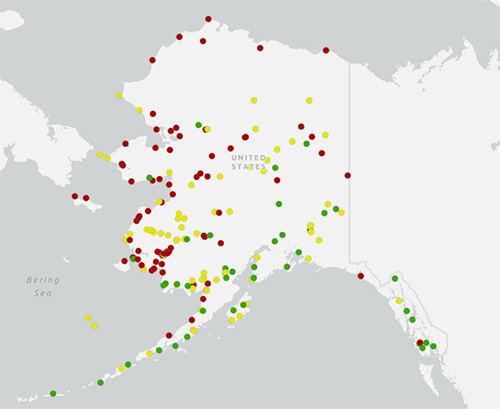
Pilot project to support Tribal climate resilience in Alaska
In 2019, the Denali Commission Statewide Threat Assessment found that 144 Alaska Native communities (43 percent of all communities in the state of Alaska) are likely to face some degree of infrastructure damage from erosion, flooding, and/or permafrost thaw. Communities are grouped into three categories groups 1-3, with group 1 (red) most at-risk, group 2 (yellow) at moderate risk, and group 3 (green) at lower risk .
Photo courtesy of Alaska Division of Geological & Geophysical Surveys |
|
Alaska: Pilot project to support Tribal climate resilience in Alaska -
Today, the Alaska Native Tribal Health Consortium (ANTHC) and NOAA announced the launch of a new pilot project to support Alaska Native communities' resilience to climate change. The project, “Expanding and Connecting Tribal-Led Climate Change Capacity to Serve Indigenous Community Needs in Alaska,” will establish a director of Tribal climate change initiatives position at ANTHC to leverage statewide relationships with Tribes.
The project aims to accomplish three objectives:
• Conduct a landscape assessment of Tribal climate change adaptation activities in Alaska and establish a baseline understanding of Tribal climate change challenges and responses.
• Formulate and launch an Alaska Tribal Climate Change Advisory Group to ensure that Tribal climate change efforts across the State are led and prioritized by Alaska Native people.
• Lead the Tribal review and publication of the Unmet Needs of Environmentally Threatened Alaska Native Villages Report, which will inform NOAA and other agency investment priorities.
"The Department of Commerce takes seriously its responsibility to engage with Tribal partners, and this innovative pilot project is an example of this commitment," said Deputy Secretary of Commerce Don Graves. "Bringing together NOAA's climate data and tools with the equity, health and service delivery expertise of ANTHC will help ensure Alaska Native communities have the resources to make informed decisions in the face of climate risks."
The project was developed in response to feedback received during a 2021 climate and equity roundtable. Participants focused on climate equity (the concept of ensuring that communities that bear unequal burdens created by climate change have the resources needed to build resilience and adapt to change), community health and well-being and barriers Alaska Native communities face in accessing needed resources. Addressing environmental threats that are worsening with climate change, including food security, extreme flooding and erosion and melting permafrost were identified as high priorities. - More...
Thursday - August 18, 2022
Alaska: Historic Alaska Tribal Child Welfare Compact becomes Law -
A bill codifying the Alaska Tribal Child Welfare Compact, automatically became State law without the Governor’s signature on Friday, August 5, 2022.
The Alaska Tribal Child Welfare Compact began in 2017, under Governor Bill Walker and HSS Commissioner Valerie Nurr’araaluk Davidson, who signed the landmark State-Tribal Compact with 18 Tribal Co-Signers, representing 161 federally-recognized Tribes. The Compact was created to address and improve deep structural inequities in Alaska’s child welfare system, and has continued under the current Administration.
“The Tribal Child Welfare Compact is an excellent example of the State capitalizing on the excellent work of Alaska Tribes and working together to improve the way we are meeting the needs of Alaska families,” said Representative Tiffany Zulkosky (D-Bethel), who served as prime sponsor of HB 184. “Healthy communities begin with healthy families. When our children succeed, so does Alaska.”
“Tribal compacting is the way out of Alaska’s child welfare crisis,” said Alaska Federation of Natives Executive Vice President and General Counsel Nicole Borromeo, who serves as the Compact Facilitator. “Lieutenant Governor Valerie Davidson knew this when she negotiated the Compact as the state’s Health Commissioner - with Governor Walker’s full support, and Representative Tiffany Zulkosky was able to codify the course during her tenure in the Legislature. What an incredible legacy for two Alaska Native women from the Yukon Kuskokwim Delta. Quyana to them for doing the work. Generations of Alaskans will benefit from their foresight.” - More...
Thursday - August 18, 2022
|
|
Alaska: Thawing Arctic hillsides are major climate change contributors By ROD BOYCE -
Thawing Arctic hillsides release a significant amount of organic carbon that has been locked in frozen ground for thousands of years but which now can contribute to an already warming climate, according to new research.
The finding comes from the study of hillsides in a far north region of Russia, where the researchers also found a significant and rapid increase of collapsed hillsides. The collapses feature landslides that gradually expose more of the permafrost for thawing — and more carbon for release.
Global climate models don’t account for the once-frozen carbon set free by these collapsing hillsides. The researchers say that needs to change.
The findings were published July 15 in The Cryosphere, a journal of the European Geosciences Union. They are the first based on the use of satellite imagery to estimate carbon release from slumping Arctic hillsides.
“Permafrost landscapes are expected to change profoundly over the next decades,” said Simon Zwieback, a University of Alaska Fairbanks Geophysical Institute assistant professor and one of the research paper’s authors. “Among the many consequences of this is the release of greenhouse gasses such as carbon dioxide, which can exacerbate climate change.”
Similar thaw slumps are also widespread in Russia’s Yamal Peninsula in Siberia, in northwestern Canada and in Canada’s Arctic archipelago.
Doctoral student Philipp Bernhard of the Swiss Federal Institute of Technology in Zürich and Irena Hajnsek of the Zürich institute and the German Aerospace Center also worked on the research. Zwieback and Hajnsek were Bernhard’s Ph.D. advisors.
The work focused on 10,500 square miles in the northern Taymyr Peninsula of Russia’s Siberia, an area bounded by the Byrranga Mountains to the south and the Kara Sea to the north.
The researchers compared satellite images from two time periods — 2010-2017 and 2018-2021 — to note elevation changes and movement of debris and of the slump’s exposed leading edge. They then incorporated a soil organic carbon map and made assumptions about the ground’s ice content and its carbon stores to calculate the amount of organic carbon released.
An ice sheet covered the entire study region around 130,000 years ago, with subsequent periods of ice retreat and advance covering a smaller and smaller area. The most recent retreat occurred at the end of the last ice age and was largely completed 12,000 years ago. - More...
Thursday - August 18, 2022
|
JOE GUZZARDI: BIDEN’S LATEST JOBS REPORT ONLY TELLS HALF THE TALE - The July Bureau of Labor Statistics report was a blockbuster.
The economy created 528,000 jobs, and unemployment dipped to 3.5 percent, well ahead of Dow Jones’ 258,000 new jobs and 3.6 percent unemployment estimates. Wage growth also rose; average hourly earnings increased 0.5 percent for the month and 5.2 percent year-over-year, higher than, respectively, the .03 percent and 4.9 percent Wall Street estimates. A .05 percent increase, however, keeps consumers getting poorer as inflation last month proceeded at an 8.5 percent rate.
But no federal government report merits more skepticism than this monthly jobs report. If the jobs market were truly booming, then the labor participation rate should be climbing. Instead, the participation rate is falling.
The number of Americans not in the labor force, those who neither have a job nor are seeking employment, climbed past the 100 million mark again in July, hitting 100,051,000, a 239,000 increase from June. From May to June, the previous 2022 reporting period, Americans detached from the labor force increased 510,000. The July report showed that labor participation was 62.1 percent. - More...
Thursday - August 18, 2022
TAYLOR KOVAR: Ask Taylor: What About Supply Chain Problems? By Taylor J Kovar, CFP® - Hey Taylor: I hear more about inflation than supply when people talk about rising costs, but then I read things about supply chain problems. Is that still going on? And still because of COVID-19? - Bailey Hey Bailey: That’s a great question and a point more people should be making. We’ve got inflation issues to worry about, but a lot of the sticker shock people are dealing with still has to do with trade and supply in a jumbled global network.
1. Operations keep shutting down. A giant port in Shanghai shut down recently because of a positive COVID test. Warehouses are frequently understaffed or closed, we’re still getting things back on track after the Suez Canal closure, and even the functioning ports keep dealing with container shortages. The pandemic halted most industries, and getting things back up and running is proving to be a big headache. That makes every hiccup, big or small, feel like a major disruption. In the beginning, it was that people simply weren’t supplying. Now we’ve got people trying to ramp up supply and hitting significant roadblocks. - More...
Thursday - August 18, 2022
 |
FINANCIAL FOCUS: What should you know about IRA rollovers? Provided By BEN EDWARDS, AAMS® - If you’ve been contributing to an IRA, you’ve chosen a great way to save and invest for retirement. All IRAs have potential tax benefits and a range of investment possibilities, but not all IRA providers offer the same features. So, if you decide that your current IRA provider is charging higher fees than you’d like, or perhaps doesn’t offer as many investment choices as you want, then you might choose to move your IRA assets to another provider. How should you go about making this switch?
Here are some options to consider:
• Trustee-to-trustee transfer or direct rollover – You can ask the financial institution holding your IRA to move the money directly to another IRA. No taxes will be withheld from the amount transferred at the time of the transfer. This method is generally hassle-free, but some IRA sponsors will still only mail the check to your address of record, so you’d have to forward it to your new IRA. - More....
Thursday - August 18, 2022 |
POLITICAL CARTOONS

Political Cartoon: Open Border Fentanyl Deaths
by Dick Wright©2022, PoliticalCartoons.com
Distributed to subscribers for publication by CagleCartoons.com

Political Cartoon: Same tactics by the same people
by Rivers©2022, CagleCartoons.com
Distributed to subscribers for publication by CagleCartoons.com
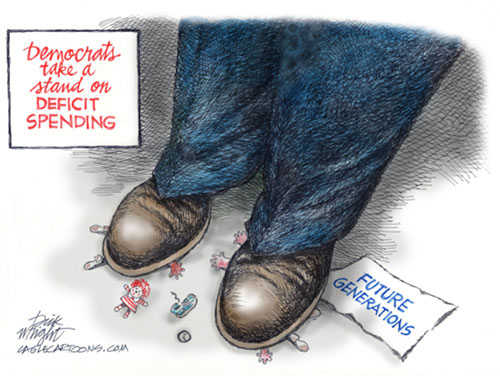
Political Cartoon: Democrat Deficit Spending
by Dick Wright©2022, PoliticalCartoons.com
Distributed to subscribers for publication by CagleCartoons.com

Political Cartoon: If the FBI Raided My Home
by Monte Wolverton©2022, Battle Ground, WA
Distributed to subscribers for publication by CagleCartoons.com
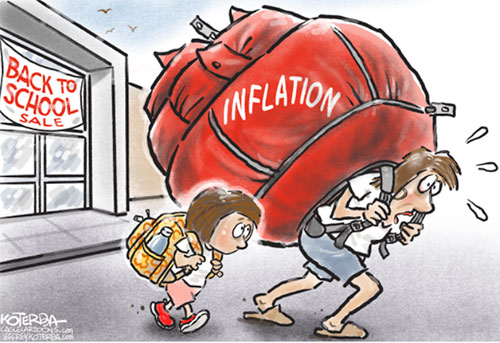
Political Cartoon: Back to School with Inflation
by Jeff Koterba©2022, patreon.com/jeffreykoterba
Distributed to subscribers for publication by CagleCartoons.com |
 |
Ketchikan Gateway Borough Assembly 2022 Candidate By Austin Otos - I’ve had the honor to serve on the Ketchikan Gateway Borough Assembly for three years starting in 2019. Since being elected, local government has undergone tumultuous changes starting with COVID, transitioning to having no cruise passengers, and ending with the community coming back into somewhat normalcy. I would characterize my short three-year term on the Borough Assembly as the “COVID Years”. Starting in 2020, the KGB declared a state of emergency and a two-year recovery process began. During those few years of economic recovery, the KGB was able to recuperate its loses from various federal and state government dollars such as the CARES Act, which helped restore tax revenue lost from an abysmal cruise ship year. With these funds, we were able to inject millions of dollars into the community into programs such as: rental/mortgage relief, daycare assistance, supplemental food programs, and local business grants. During the pandemic, both local governments worked together to provide services with minimum redundancy, which maximized the programs efficiencies. Without these crucial programs, the community would’ve had compounded social and economic problems.
- More...
Saturday - July 30, 2022
 |
Our Ancestors Survived Against All Odds, We Owe It to Them to Vote By Deb Haaland - Many people don’t know that Native Americans didn’t have the right to vote in federal elections until we were granted U.S. citizenship in 1924 and that it wasn’t until the 1960s that the last state granted us the right to vote in state elections. This is the sad and ironic truth — even though Indigenous communities in North America are some of the oldest democracies in the world. Participating in governing is a time honored and sacred tradition in our Indigenous communities. Our ancestors and relatives survived against seemingly insurmountable odds, which is why we owe it to them to make our voices heard at the ballot box.
This is why I became an organizer in the first place. I knew that generations of laws restricting the right to vote for Native people impacted our participation in elections, and that it would take a concerted effort to register voters; ensure they had the information about voting dates, locations and hours; and personal outreach to increase voter participation.
With my voting rights champion, WWII veteran Miguel Trujillo in my mind, I would lace up my sneakers, drive out to remote communities in New Mexico, and go door to door. I can’t count how many times I knocked on someone’s door and heard that it was the first time anyone had ever reached out to them to register to vote. Since my organizing days in the early 2000s, we’ve made strides to increase the Native vote. But as we fast forward to today, we face the same battles.
Recent attempts such as closing certain polling locations, limiting early voting, changing polling location hours, and even drawing maps to hush the voices of specific populations are consistent attempts to restrict voting access. - More...
Saturday - July 30, 2022
FIRE ALL CURRENT CITY COUNCIL MEMBERS AS THEY COME UP FOR RE-ELECTION By David G Hanger
- That includes the mayor whose recent article parodying vehicle choices was also pretty dopey in its comments about the bad roads around here and the tanks you need to drive on them. Visiting sister Kathy in Montana a few weeks back I watched a fellow named Thor disassemble and completely re-build the front end of my nephew’s big pickup truck. That took two days of hard work and would surely cost several thousands to do in K-town. I hear there is a lot of that kind of work in town; the car repair folks cannot keep up.
Consider the fact that a city like Anchorage has hundreds of roads and streets to maintain, cities like Seattle, San Francisco, or Los Angeles thousands, and what we are asking locally is for this bunch of clowns to figure out how to pave the incredibly bad sections of one road.
Awash in funny money for two years and more, and all we hear is about raises for bureaucrats and raises for city council members; no concern whatsoever about the wrecked infrastructure for which they are responsible that is costing locals untold tens of thousands of dollars in unneeded vehicle repair costs. - More...
Saturday - July 30, 2022
Email your opinions and letters for publication to editor@sitnews.us
|
Articles &
photographs that appear in SitNews may be protected by copyright
and may not be reprinted or redistributed without written permission
from and payment of required fees to the proper sources.
E-mail your news &
photos to editor@sitnews.us
Photographers choosing to submit photographs for publication to SitNews are in doing so, granting their permission for publication and for archiving. SitNews does not sell photographs. All requests for purchasing a photograph will be emailed to the photographer.
|
|












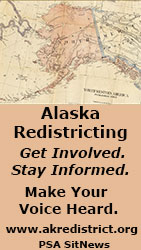
|
|
![]() Contact
Contact ![]()
![]() Webmail
Letters
Webmail
Letters![]()
![]() News Tips
News Tips![]()
![]() Copyright Info
Copyright Info![]() Archives
Archives![]() Alaska
Alaska![]() Ketchikan
Ketchikan![]() SE Alaska
SE Alaska![]() Dave Kiffer
Dave Kiffer![]() Money Matters
Money Matters ![]() June Allen
June Allen![]() Dave
Kiffer
Dave
Kiffer![]() Louise
B. Harrington
Louise
B. Harrington ![]() Ketchikan Links
Ketchikan Links![]() FAA Accident Reports
FAA Accident Reports ![]() NTSB
Accident Reports
NTSB
Accident Reports![]() Court Calendar
Court Calendar![]() Recent Filings & Case Dispositions
Recent Filings & Case Dispositions ![]() Court Records Search
Court Records Search![]() Sex Offender Reg.
Sex Offender Reg.![]() Public Notices
Public Notices![]() Alaska Recall Alerts
Alaska Recall Alerts![]() Recalls.gov
Recalls.gov![]() AST Daily Dispatch
AST Daily Dispatch![]() KTN
Police Reports
KTN
Police Reports![]() Juneau Police Reports
Juneau Police Reports ![]() Today's
Forecast
Today's
Forecast![]() KTN
Weather Data
KTN
Weather Data![]() AK
Weather Map
AK
Weather Map![]() AK Weathercams
AK Weathercams![]() AK Earthquakes
AK Earthquakes















